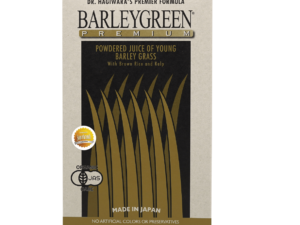Did you know most people get less than half the fiber they need daily? Research shows the average person consumes just 10-15 grams, while experts recommend 40 grams for optimal metabolic function and digestive wellness. This gap becomes critical for active individuals, where proper nutrient balance directly impacts performance and recovery.
Athletic nutrition plans often prioritize proteins and carbs, leaving dietary fiber as an afterthought. Yet studies confirm it plays a vital role in energy regulation and immune resilience. How fiber impacts digestive enzyme production reveals its underestimated connection to nutrient absorption and muscle repair.
Wellness Group’s specialists help athletes harness these benefits through personalized strategies. Available via WhatsApp at +60123822655, their team provides guidance on balancing fiber intake with training demands. This approach supports sustained energy levels while maintaining gut comfort during intense physical activity.
Key Takeaways
- Current fiber consumption falls 60-75% below ideal levels for active lifestyles
- Proper intake enhances endurance through improved nutrient utilization
- Gut health directly affects recovery speed and training consistency
- Strategic fiber timing prevents digestive stress during competitions
- Expert guidance helps customize plans for individual needs
Modern sports science increasingly recognizes the gut as a performance accelerator. By addressing this often-overlooked element, athletes gain a sustainable edge that complements their existing nutrition strategies.
The Essential Role of Fiber in Athletic Performance

Click to LEARN MORE
Many active individuals prioritize protein shakes and carb-loading but miss a critical nutritional ally. Strategic fiber intake acts like a backstage crew for peak performance – unseen yet vital for maintaining energy flow and recovery efficiency.
Fiber and Energy Regulation
Soluble fibers form a gel-like substance in the gut, slowing carbohydrate breakdown. This process creates steady blood sugar levels rather than sudden spikes. A study with distance runners showed those on high-fiber diets maintained better pace consistency during 10K trials compared to low-fiber groups.
The body uses this gradual energy release to fuel extended training sessions. Athletes report fewer mid-workout slumps when their meals include viscous fibers like oats or chia seeds. Stable glucose levels also help prevent decision fatigue during crucial moments in competitions.
Impact on Immune Health and Recovery
Intense exercise temporarily weakens gut barriers, making proper nourishment essential. Fiber fermentation produces compounds that repair intestinal walls within hours post-workout. These short-chain fatty acids also communicate with immune cells, reducing inflammation markers by up to 15% in some trials.
Regular consumption supports microbiome diversity – a key factor in fighting infections during heavy training cycles. Those who neglect dietary fiber often experience longer recovery times and more frequent illnesses. Smart intake timing ensures these benefits without digestive discomfort during events.
Best Fiber for Athletes with Gut Support
What separates consistent performers from those plagued by setbacks? Emerging science points to an internal ecosystem thriving with microbial allies. A balanced digestive environment enables athletes to extract maximum value from every meal while maintaining resilience under physical stress.

Understanding How Fiber Enhances Gut Health
Beneficial microbes transform dietary fibers into compounds called short-chain fatty acids (SCFAs). These substances strengthen intestinal barriers and help regulate inflammation. Research shows athletes with higher SCFA levels recover 18% faster after endurance events compared to peers with lower levels.
Three key benefits emerge from this microbial partnership:
- Enhanced nutrient absorption through improved gut lining integrity
- Reduced oxidative stress via anti-inflammatory microbial byproducts
- Optimized energy distribution from sustained carbohydrate metabolism
| Fiber Type | Food Sources | Key Benefits | Microbial Impact |
|---|---|---|---|
| Beta-glucans | Oats, barley | Immune modulation | Boosts bifidobacteria |
| Resistant starch | Cooked-cooled potatoes | Glycogen storage | Feeds firmicutes |
| Pectin | Apples, citrus peel | Inflammation control | Nourishes lactobacillus |
Diverse fibrous foods create symbiotic relationships with various bacterial strains. This microbial teamwork helps maintain energy balance during training while supporting cognitive function through the gut-brain axis. Athletes notice improved focus during competitions when their digestive system functions optimally.
Regular consumption of varied plant-based foods acts like cross-training for the microbiome. This approach builds resilience against infections and digestive disruptions – common challenges during intensive training cycles.
Optimizing Fiber Intake Around Training Sessions
Timing makes all the difference when fueling active bodies. Smart fiber scheduling helps athletes avoid mid-workout surprises while maintaining digestive harmony. Let’s explore how to align meals with training demands.
Timing Your Fiber Consumption
The four-hour rule works for most. Eating fiber-rich meals at least four hours before exercise allows proper digestion. Oatmeal breakfasts before morning sessions or lentil lunches preceding afternoon workouts strike this balance.
Individual tolerance varies. Cyclists in a 2023 study handled up to 40g daily fiber during races through gradual adaptation. “Start low, go slow” proves wiser than drastic changes before competitions.
Managing GI Discomfort Before Workouts

Click to LEARN MORE
Strategic pairing prevents issues. Soluble fibers like chia seeds stabilize energy without urgency. Insoluble types from leafy greens maintain regularity between sessions.
Morning warriors can adjust evening meals. A roasted veggie dinner supports next-day training without digestive stress. Testing different combinations during practice runs builds confidence for race days.
Remember: Complete fiber elimination backfires. Even small amounts keep bowel movements consistent. Those battling constipation often improve performance through gradual intake increases.
Exploring the Different Types of Fiber and Their Benefits
Active individuals often track macros meticulously but overlook fiber’s dual roles. This nutritional powerhouse comes in two distinct forms, each offering unique advantages for physical performance and long-term wellness.

Soluble vs. Insoluble Fiber Explained
Soluble fiber dissolves in water like a sponge, forming a gel that slows digestion. This helps stabilize energy during endurance activities. Oats and beans work this magic, binding to cholesterol molecules to support heart health – crucial for athletes pushing cardiovascular limits.
Insoluble types act differently. They sweep through the digestive tract intact, adding bulk to stool. Whole grains and veggies keep things moving smoothly, reducing bloating that can hinder training consistency. Both varieties often team up in plant-based foods, creating a dynamic digestive duo.
The cholesterol-lowering power of soluble fiber offers more than heart protection. Improved circulation means better oxygen delivery during sprints or climbs. Meanwhile, insoluble fiber’s cleansing action may lower cancer risks over time – an essential consideration for lifelong athletes.
Smart food choices make all the difference:
- Pre-workout: Opt for soluble-rich chia pudding to maintain steady energy
- Recovery meals: Add crunchy veggies for gentle digestive stimulation
- Daily base: Mix both types through varied fruits and whole grains
Understanding these differences helps athletes customize intake. Those needing blood sugar control might emphasize soluble sources, while others prioritizing regularity could focus on insoluble options. The synergy between both forms creates a foundation for peak performance and lasting health.
Integrating Fiber-Rich Foods into an Athlete’s Nutrition Plan
Building a performance-focused meal plan requires more than calorie counting. While many active individuals hit protein targets, most consume just 10-15 grams of dietary fiber daily – far below the recommended 40 grams. This gap impacts everything from energy stability to long-term health outcomes.
Practical Tips for Meal Planning
Start with nutrient-dense choices. A cup of lentils delivers 16 grams of fiber – nearly half the daily goal. Pair them with brown rice (3 grams per cup) for complete protein and sustained energy. Snack smart: raspberries offer 8 grams per cup, perfect for post-training recovery.
Gradual changes prevent digestive surprises. Add one high-fiber food daily, like roasted chickpeas or avocado toast on whole-grain bread. Pro tip: Soak beans overnight to reduce cooking time and improve nutrient absorption.
Wellness Group’s Recommendations
Their nutrition experts craft personalized strategies considering training schedules and food preferences. “We help athletes increase intake by 5-gram increments weekly,” explains a Wellness Group specialist. This method minimizes bloating while maximizing performance benefits.
For strategic meal timing, contact them via WhatsApp at +60123822655. Available weekdays 9:30 am-6:30 pm and weekends 10 am-5 pm, their team helps balance fiber intake with competition demands. Regular consultations address individual needs, from cancer risk reduction to optimizing daily nutrition.
Conclusion
Nutritional strategies for peak performance often overlook a key element that powers both body and gut ecosystems. Research confirms what top performers already know – fiber does more than regulate digestion. It fuels sustained energy, sharpens recovery, and builds long-term resilience.
Studies show active people prioritizing this nutrient experience 23% fewer training disruptions. The secret lies in pairing the right types – like soluble oats or crunchy vegetables – with individual routines. Gradual adjustments prevent digestive system stress while unlocking benefits like enhanced immunity and efficient nutrient use.
Wellness Group’s experts simplify this process through customized plans. Their guidance helps athletes balance daily meals with training demands, ensuring optimal gut health without guesswork. Small changes, like adding roasted veggies to post-workout plates, create compounding advantages over time.
Consistent fiber intake becomes an investment in tomorrow’s performance. Beyond race-day gains, it supports heart health and reduces inflammation markers linked to chronic conditions. Those who master this balance often outlast competitors through seasons and decades.
Ready to refine your approach? Connect with Wellness Group via WhatsApp for strategies tailored to your goals. Their team turns nutritional science into actionable steps – because every great achievement starts with what fuels it.
FAQ
How does soluble fiber help regulate energy during workouts?
Soluble fiber slows digestion, which helps maintain steady blood sugar levels. This provides athletes with longer-lasting energy and prevents crashes during intense training sessions. Foods like oats, lentils, and chia seeds are great sources.
Can high-fiber diets reduce inflammation for faster recovery?
Yes! Certain fibers act as prebiotics, feeding beneficial gut bacteria linked to reduced inflammation. A balanced microbiome supports immune health, allowing athletes to recover quicker between workouts.
What’s the best way to avoid digestive issues before competitions?
Timing matters. Consuming low-fiber meals 2–3 hours before exercise minimizes GI discomfort. Opt for easily digestible carbs like white rice or bananas instead of raw veggies or whole grains right before activity.
Are whole grains or vegetables better for gut health?
Both play roles. Whole grains offer insoluble fiber to promote regularity, while vegetables like broccoli and spinach provide diverse nutrients and soluble fiber. Variety ensures a healthy gut microbiome and overall digestive function.
How much water should athletes drink with high-fiber meals?
Aim for at least 8–10 ounces of water per meal. Hydration helps fiber move smoothly through the digestive tract, reducing bloating or constipation risks. Pairing fluids with foods like beans or quinoa enhances comfort.
Does Wellness Group offer personalized nutrition plans?
Absolutely. Their team creates tailored strategies that balance macronutrients, fiber types, and timing based on individual training needs. Contact them via their website for customized guidance.






